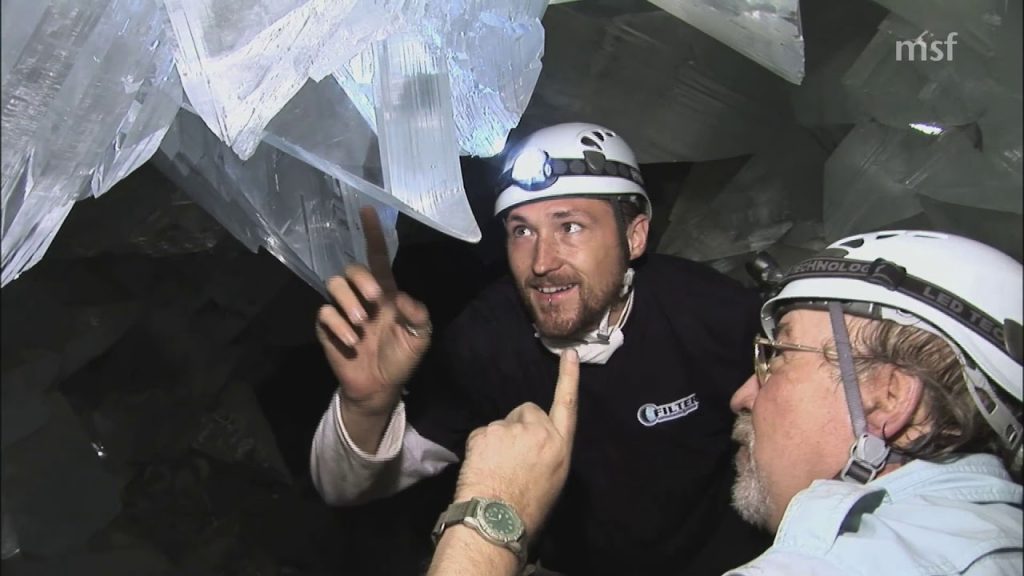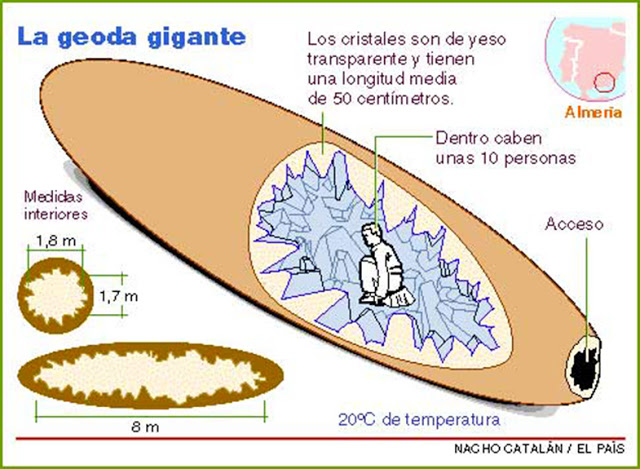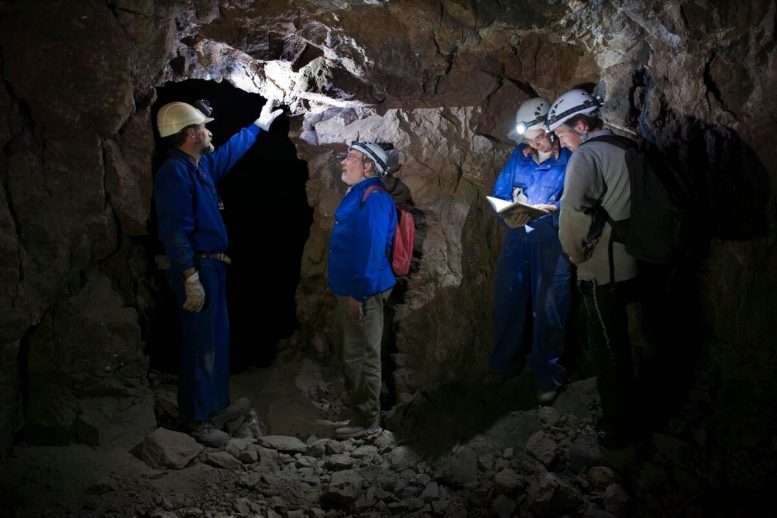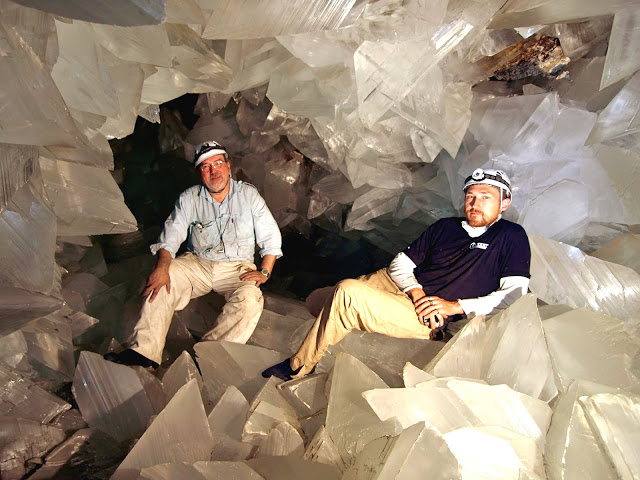The origins of Pulpi’s Giant Geode have been revealed in a recently published paper in the journal Geology. Our Principal Investigator, Juan Manuel García-Ruiz and colleagues have revealed the geological history of the large gypsum crystals within the now world-famous geode of Pulpí, in southeast Spain.

It is like those familiar couplets of stone interiors covered with bright crystallites, but so large that several people can fit inside. The crystals, of up to two meters in size, are so transparent that they look like ice crystals.

The origins of Pulpi’s Giant Geode have been revealed and we now know it is thanks to effects such as the dissolution of anhydrite and the phenomenon known as ‘Ostwald ripening’ where small crystals dissolve and redeposit onto larger crystals, we can now enjoy this unique place more than 60,000 and up to 2 million years later.
More at geosociety.org

Semejante a esas populares rocas de interiores recubiertos de cristalitos brillantes en este caso es tan grande como para albergar a varias personas. Los cristales, de hasta dos metros de tamaño, son tan transparentes que parecen cristales de hielo.
En un artículo recientemente publicado en la revista Geology, nuestro Investigador Principal, Juan Manuel García-Ruiz y sus colegas revelaron la historia geológica y los orígenes de los grandes cristales de yeso dentro de esta geoda de fama mundial.

Es gracias a la disolución de la anihidrita a unos 20º y al fenómeno conocido como ‘maduración de Ostwald’ donde los cristales más pequeños se disuelven para alimentar a los más grandes que podemos disfrutar hoy, más de 60.000 y menos de 2 millones de años después, de la Geoda Gigante de Pulpí:
Más info en ABC ciencia


